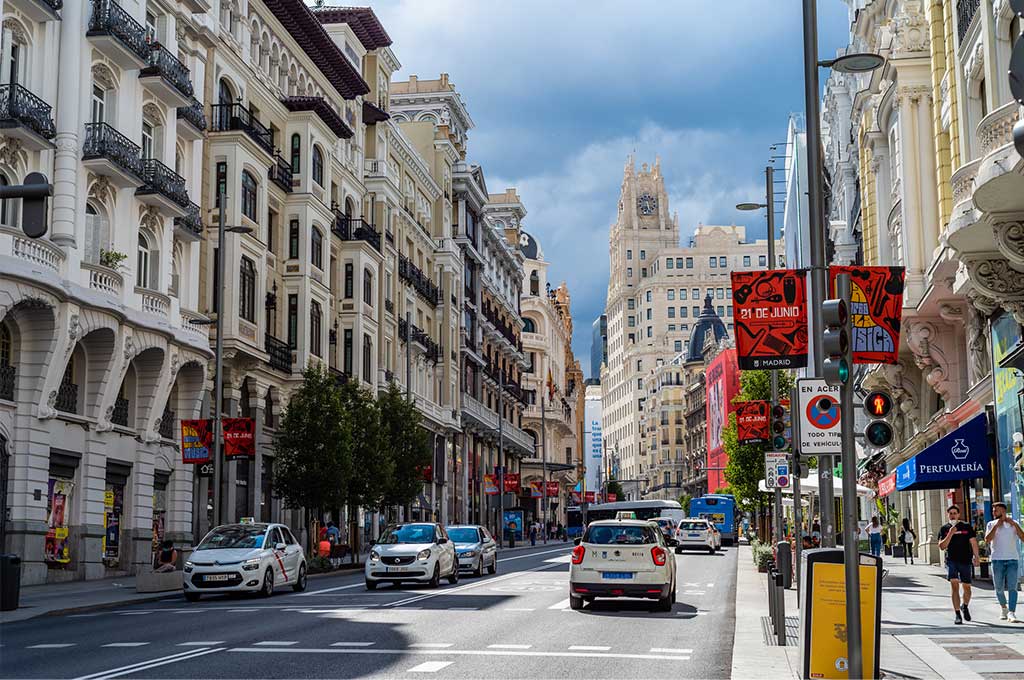
IESE Insight
What happens to local business when cars are banned from the streets?
A study of Madrid Central sheds light on everything from reduced emissions to a downturn in business in the new urban landscape.
High levels of pollution have been linked to poor health, lower cognitive development and educational attainment, and lower productivity, so it’s no wonder some cities are taking strong steps to lower emissions in urban centers.
In Europe, low-emission zones — which regulate access to urban areas depending on the emissions of motorized vehicles — are already the backbone of European clean-air measures. But do they work and what secondary economic effects might they have?
IESE visiting professor Ricard Gil, with Jose Enrique Galdon-Sanchez, Felix Holub and Guillermo Uriz-Uharte, looked at the environmental and economic impact of the Madrid Central low-emission zone, in a paper that unpicks both the social benefits and the private costs of the policy, published in the Journal of the European Economic Association.
Low-emission zones improve urban air quality
The Madrid Central low-emission zone was introduced on November 30, 2018, to reduce pollution levels in line with European standards, which the Spanish capital had regularly broken and been fined for. Compared with similar schemes in other cities, Madrid Central is extremely restrictive and affects most vehicles.
The first question was, inevitably, did the policy, in fact, reduce emissions?
Madrid, like most European cities, has air-quality monitoring stations that collect data for the European Environment Agency (EEA). Of the 33 monitoring stations in Madrid, one is in the Madrid Central zone. Analyzing this data for the concentration of nitrogen dioxide (NO2), with corrections for weather effects, national holidays and other factors, showed that Madrid Central had successfully reduced pollution by 18.6% — a somewhat conservative finding but based on long data series and allowing for differences over time per monitoring station.
Pollution reduction is not the only metric to measure the effects of the policy: another is the reduction in congestion. Data from more than 4,000 traffic monitors, measuring traffic at 15-minute intervals, found that congestion within the reduction zone was down by 16%.
Although gainsayers had suggested that the low-emission zone would displace pollution concentrations from central Madrid to areas just outside the city, this effect didn’t materialize — it seemed that people changed their behavior to accommodate the new restrictions, rather than just changing their route.
Implementation of Madrid Central low-emission zone had economic impacts
There is always some fallout to any transformative policy. In this case, Gil and co-authors wished to know: Do such low-emission zones create a division between winners and losers, benefiting the many at the cost of a few?
Using detailed credit- and debit-card data, the authors were able to analyze transactions in brick-and-mortar and online commerce for specific postcodes within Madrid. This meant that researchers could analyze purchases made within the Madrid Central zone by consumers based in other parts of the city. Such analyses led to an understanding of the impact of the increased transport costs caused by Madrid Central on consumer spending within the zone itself.
Comparing consumer spending before and after the establishment of the low-emission zone, the researchers found a 20.6% decrease in brick-and-mortar spending within the low-emission zone by those living outside it. This suggests that traditional retail and commerce within the low-emission zone did indeed pay a higher price for clean air.
There was some economic compensation — a 12% increase in online spending in Madrid Central by buyers living outside it, suggesting that buyers were willing to move online for differentiated goods.
However, the authors point out that many of these online sales go to different types of sellers, and therefore smaller businesses may be shouldering much of the loss.
So, are low-emission zones effective?
Certainly, low-emission zones can improve air quality, and with it, citizen health. The paper estimates that environmental benefits from Madrid Central had led to 73 fewer premature/low-birth-weight births per year, as well as 300 fewer respiratory hospital admissions, 319 fewer cardiovascular admissions, annual medical savings of €3.4 million and 88 lives saved. These are clearly important societal benefits.
However, as low-emission zones gain popularity throughout Europe and beyond, we may need to think about how they can be combined with initiatives to protect retail businesses and SMEs, as well as more effective public transportation options, so that everyone can come into town and enjoy the fresh air.
